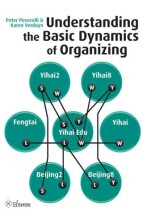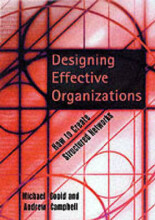Levinthal: crossing an apparent chasm: bridging mindful and less-mindful perspectives on organizational learning
16 important questions on Levinthal: crossing an apparent chasm: bridging mindful and less-mindful perspectives on organizational learning
What is the purpose of Levinthal's study?
Why is the distinction between ostensive (abstract pattern) and performative (specific actions) important? (Levinthal)
The mindful and less-mindful perspectives are not just complements, there are also 2 points of tension/conflict. Which one? (Levinthal)
2. It is hard to interpret the terms mindful and less-mindful behavior in a value-free manner.
- Higher grades + faster learning
- Never study anything twice
- 100% sure, 100% understanding
What does Levinthal examines and hopes for with this study?
Mindful and less-mindful behavior/processes are not wholly distinct categories but there are important interrelationships between them. Explain the two processes of Levinthal:
Less-mindful: automatic processes that free us from tasks that don't require our vigilance (waakzaamheid) and intervention, so our time/energy can be redirected to those tasks that do. Routine are an important storehouse of accumulated organizational experience.
As image 11 suggests, Levinthal highlights four important manifestations of complementarity between the mindful and less-mindful perspectives on organizations. What is highlighted?
Describe the first out of four complementarity's of Levinthal?
The rapid emergence of novelty (vernieuwing) results from the recombination of existing routines. Thus: the set of familiar routine is the fodder (voer) for rap innovation action. Combine existing knowledge for improvisation/innovation: be creative and experienced.
Describe the second out of four complementarity's of Levinthal?
Describe the third out of four complementarity's of Levinthal?
Describe the fourth out of four complementarity's of Levinthal?
Failure triggers an increase in search for a new way of doing business.
When do less-mindful processes change? (Levinthal)
The primacy and value of change VS stability in behavior in quite different in the two perspectives. Explain this? (Levinthal)
Explain the presumption of the attention-based theory (Levinthal)?
As suggested by image 12, Levinthal's examination of the interrelationship between mindful and less-mindful processes suggests a strong performative link between the two perspectives. Explain this
According to Levinthal there are ways to get around learning traps. Describe:
2. Less-mindful: routine-driven behavior and reinforcement learning/
> Elements of less-mindful processes are necessary element underlying mindfulness: established action repertoires that facilitate the response to novel stimuli. And routines enable mindfulness to be sustained across time and the span of the organization.
What are Weicks 4 steps towards mindfulness and can also result in resilience:
2. Reluctance (tegenzin) to simplify interpretation
3. Sensitivity to operations
4. Under-specification of strutures
The question on the page originate from the summary of the following study material:
- A unique study and practice tool
- Never study anything twice again
- Get the grades you hope for
- 100% sure, 100% understanding






























